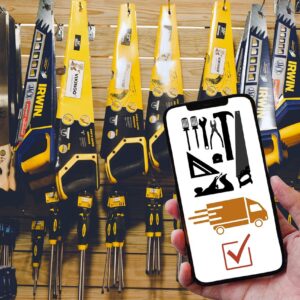Flyers have long been regarded as an essential marketing tool for those who want to implement a real-world, tangible campaign. That’s because it’s effective in reaching a wide audience without demanding huge costs or investment of time nor money. Not only that, but it’s also straightforward and easy to use, making it the perfect choice for advertisers of all stripes, experienced or not.
And while it may be the case that creating one used to be a bit more of a challenge, the plethora of freely available digital flyer maker tools nowadays makes it so that designing one doesn’t take more than a few minutes at a time. There are an incredible amount of premade templates or downloadable designs out there that take care of the initial steps for you, making it so that all you have to do is a bit of light editing to personalize them according to your needs.
But then you may be asking, even with flyer availability, how does one exactly integrate them into a modern, effective, and cheap marketing campaign?
Let’s break it down:

Take Aim At Your Audience
Begin your marketing campaign by first identifying your core audience. While flyers are cheap enough that you could theoretically print and distribute them en masse in the vague hope of hitting your target, it’s far more efficient to introduce a policy of data-backed decision-making for a better return on investment instead.
By defining your target demographic through having access to general consumer data, you can better understand their needs and wants and thus make your product or service more relevant to them.
Not only that, but that data will also inform your approach towards them; Details such as the tone of your copy, the colors of your flyer’s elements, the fonts you’ll use, the types of photos or graphics you’ll showcase, and more will have to appeal to them too.
Bringing all these aspects together well will ideally result in you creating a visually and emotionally arresting flyer because it speaks to your chosen market’s demands. It will simultaneously ask and answer your audiences’ question: “what do you want?”

Show Your Hand
Once you have something to aim at, it’s time to pivot your effort towards hitting it. Use the fact that you know what your target audience wants to your advantage by focusing on your marketing materials – flyer included.
It’s here where the design will play a bit of a role. It’s generally best practice to use your biggest drawing point as your flyer’s visual and informational focal point. That is, make it the main topic. Then, highlight it in any way you can, and make sure that you draw your audience’s eyes towards it one way or another.
There are a lot of other little design tricks you can add to achieve this effect further. For example:
- Use color: Colour psychology states that we are naturally drawn to pretty and colorful things, so it stands to reason that you should make it bright and visually pronounced if you want to show something off. You can achieve this effect in your flyer by having a limited color palette where the loudest hues are the main focal point or having a single color against a monochrome background.
- Use size: This one is fairly self-explanatory. If you want your headline to get noticed, then make it the biggest element in your design. That way, it’s the first thing that’s seen.
- Use photos or graphics: If you have visual assets related to whatever you’re trying to promote, add it to your flyer and make it the subject. As the old saying goes, a photo is worth a thousand words, and that rule certainly applies here.
- Use unique dimensions: While there’s nothing wrong with having a square or rectangular flyers, there’s also a lot of merit in creating a differently shaped one. Special cuts can make it so that your flyer is absolutely unforgettable at first touch. You can even enhance this by integrating a bit of light origami; that small physical interaction will go a long way in making your flyer more tangible in people’s minds. Then ensure that your focus is nestled closest to the interaction points, and that’s sure to get across.
Now you could design your flyers yourself and add all these elements in, but if you’re not the creative type, online tools like Venngage can do it for you.
All you have to do is pick from one of the many templates available there then use its native online tool to edit them according to your needs. Just click and type your information in and you’re done!
Distribute Your Flyers
Once the design’s finalized, then the last step is to print them out and put them out for the world to see. There are a lot of ways of going about this, the most common being either door-to-door distribution, physical handouts to people who may be interested, direct mailing, or even displaying them in high-traffic areas or announcement boards.
Just make sure that you don’t place your flyers in a position where they could potentially be crowded out by similar material when you do this.
Now, suppose you want to integrate it into your digital campaign and want to be able to assess its quantitative and qualitative effects relative to audience engagement or awareness. In that case, you could add an interactive element into your flyers to see the interactions with it. Small additions such as a QR code or a redeemable coupon can go a long way in ensuring you know if your flyers are tracking or not.
At the end of the day, though, having flyers in your marketing campaign will only serve to make it better, no matter how it’s used. So get cracking and design one today!





